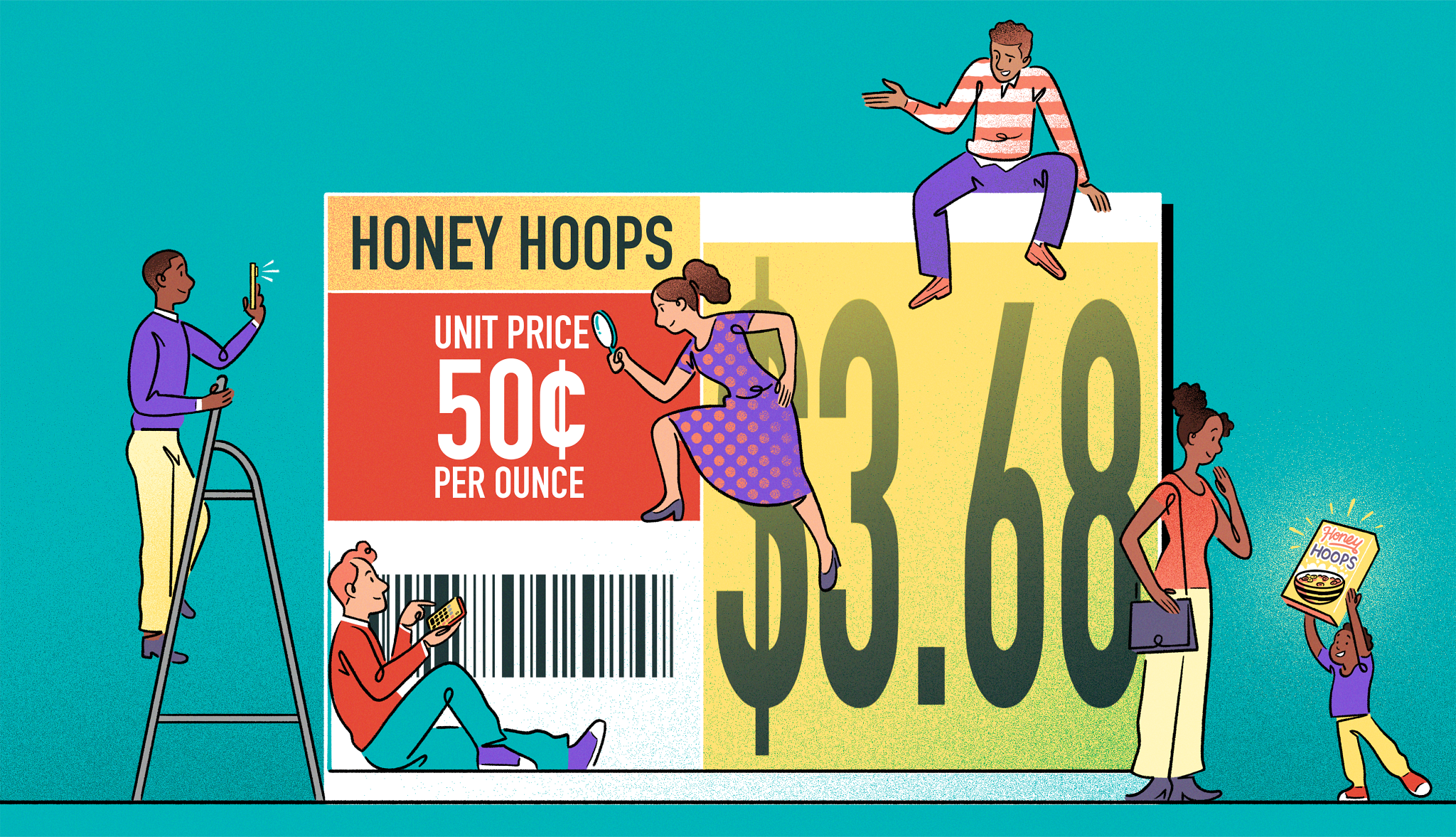AARP Hearing Center


One of the best tools for slashing your food bill is unit pricing: the tiny numbers on grocery store shelf tags showing a product’s cost per pound, quart or other standard measurement. Those prices help you find the best deal — in theory, at least — by letting you compare apples to apples, no matter what you buy. Looking at two different-size jars of, say, jam, you should be able to see which is cheaper on a per-ounce basis.
Unfortunately, unit pricing can be devilishly difficult to decipher. For this article, I checked unit prices at a range of stores to see what they could save me. I found major hassles everywhere I shopped.
The biggest problem, in stores and online, was mixed-up measurements. In one store, the unit price of a name-brand liquid detergent was listed as $2.57 per pound for one bottle and $5.21 per quart for another. Was I really supposed to measure weight against volume?
Tiny type and abbreviated product names were other big obstacles. In some cases, misaligned or missing shelf tags made it impossible to match prices with products. Coupons and sales made comparisons more confusing.
But you can still use unit pricing to come out ahead. Before you head off to the grocery store, pack your reading glasses or a magnifying glass, so you can check the mouseprint. Carry a calculator or use the one on your smartphone. If unit prices are missing or mixed up, do the math yourself: Take an item’s total price (minus any coupon discount) and divide it by the amount of the product in ounces, pounds, liters or however it’s measured. Let’s say that you find a 92-fluid-ounce container of detergent for $12.97 and a 146-fluid-ounce container of the same brand of detergent for $24.49 (as I did in one store). Divide $12.97 by 92, and you get a per-ounce price of 14 cents. Divide $24.49 by 146 and get 16.7 cents per ounce. Surprise! The laundry soap in the larger container is 19 percent more expensive!
Unit price saving tips
Here are some money-saving tips I learned by checking unit prices. I’ve never had this much fun doing math!
Larger isn’t always cheaper. Like the laundry detergent in those containers, some other products I saw had cheaper unit prices for smaller sizes, including store-brand extra-virgin olive oil and name-brand sugar.
Look to bags for better deals. At my local supermarket, bagged russet potatoes were 67 percent cheaper than loose ones! Just be sure you can inspect the produce; I recently bought apples in a paper bag that hid lots of rotten spots.
The whole (chicken) can be much less than the sum of the parts. On Walmart.com, I saw a whole name-brand chicken for $1.32 per pound, while trays of the same brand’s legs, wings and breasts went for $1.58, $2.98 and $4.64 a pound, respectively — up to three and a half times the whole-chicken unit price.
Convenient containers will cost you. In one store, I found an 11.5-fluid-ounce squirt bottle of mayo for $15.27 per quart. A 15-fluid-ounce traditional jar cost $10.64 per quart — 30 percent less. To get that convenience and still save, I buy condiments in larger, money-saving sizes, then transfer them to reusable squirt bottles at home.






























































More From AARP
How to Protect What You Collect
Tips for caring for your collectibles, including proper organization, accurately assessing the value and more
Cheapest Groceries: Aldi, Walmart or Stop & Shop?
We shopped at Walmart, Aldi and Stop & Shop to find the best prices for your groceries.
Staples You Should Always Buy on Sale
If they store well or freeze well, jump at the chance to buy at a discount
7 Tips to Slash Your Grocery Bill
Inflation still packing punch at the supermarket checkout
Recommended for You